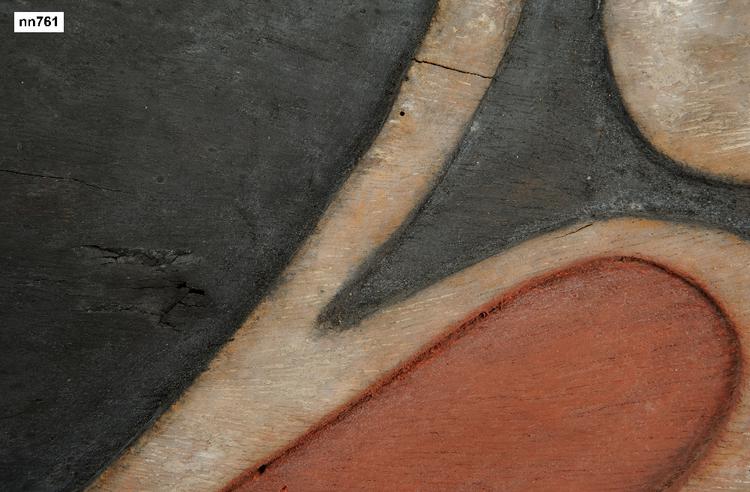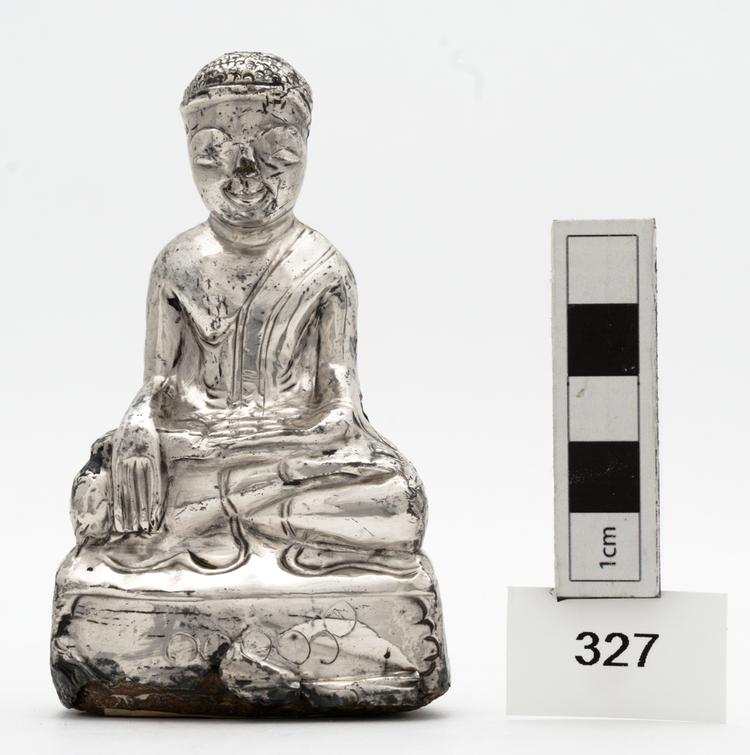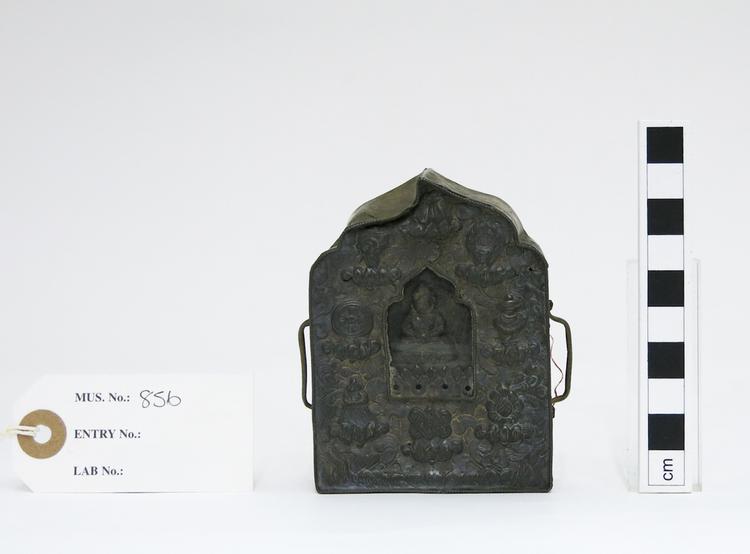
Wooden shield of ovate form and concavo-convex section. The section of the shield thickens from 1cm to 2 cm across the back of the shield in a broad band. To this band are lashed stout cane ropes across the face of the shield which are fixed together by a lattice work of split bamboo across the back of the shield. A loop of coconut fibre cordage serves as a handle. The face is decorated with shallow incised relief carving and painted in black red and white. The design involves a broad white horizontal band which divides a black oval outside of which there are tapering red scroll work elements above and below and a distinctive circular element above against a black background.
Oval War Shield, Eastern Cape, probably Wamira People, Milne Bay Province, Papua New Guinea Little is known about these remarkable carved shields, other than that they were formerly made in the Eastern Cape area of Papua New Guinea. As a result, they are likely to have been made by carvers from the Wamira people who occupy the easternmost tip of the New Guinea mainland. From the form of the bamboo scaffold supporting the shield’s grip, we can deduce that they were made to be held upright. The shield has a sharp curve from left to right, and would have provided an excellent surface for deflecting the blows of blunt weapons, such as the sword-clubs used throughout the Massim. The wood is soft and light: these shields would have primarily offered defence from arrows by absorbing their force as they penetrated into the body of the shield. The engraving and painting style of the shield’s decoration is very strong, and although it has close resonances with the curvilinear decoration of the island groups off the peninsula, it is nevertheless quite unique. Wood, bamboo. Late 19th Century. Provenance unknown.
fighting



















































































































































































































































































































































































































































































































